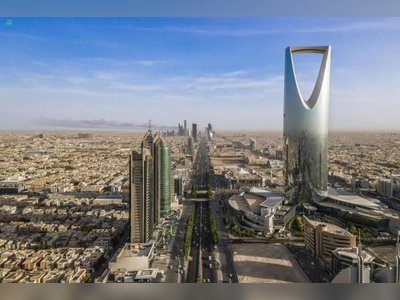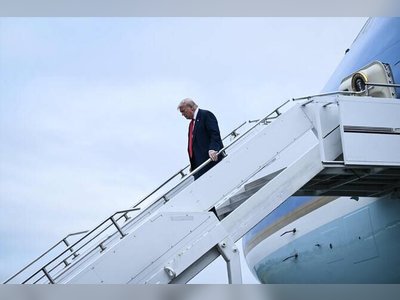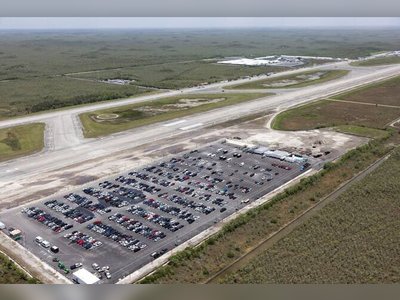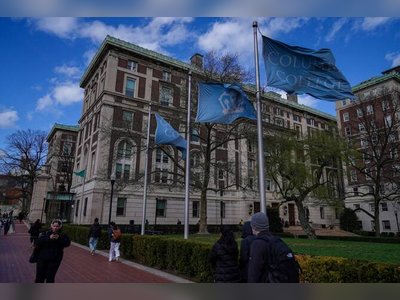
How Saudi Arabia is restoring its mangroves to combat climate change and boost tourism
Saudi Arabia's ambitious initiatives to expand its mangrove forests aim to restore coastal habitats, mitigate the impacts of climate change, and diversify the Kingdom's tourism economy.
As the world marks the UN-designated International Day for the Conservation of the Mangrove Ecosystem on July 26, Saudi Arabia is scaling up efforts to protect and expand its mangrove forests.
These "nature’s super ecosystems" are capable of storing large amounts of carbon, preventing coastal erosion, supporting biodiversity, and mitigating floods.
The Kingdom aims to plant more than 100 million mangrove trees along its coastlines by the year 2030 as part of the Saudi Green Initiative launched in 2021.
Mangroves stabilize coastlines, trap pollutants, act as carbon sinks, and provide vital breeding grounds for marine life.
Two species dominate Saudi Arabia’s mangrove zones: Rhizophora mucronata (Al-Qundil) found along the southern Red Sea coast and Avicennia marina (Al-Qarm) which thrives on the Arabian Gulf and northern Red Sea shores.
The National Center for Vegetation Cover Development and Combating Desertification (NCVC), among other initiatives, has already planted more than 14.6 million mangrove trees in partnership with private and public sector entities.
The cultivation and transplantation of these trees require detailed planning and precision to ensure long-term survival.
Conservation teams install fencing to protect young trees from animals such as camels that could graze on the saplings.
The mangroves are among the most carbon-dense forests on Earth, locking away CO2 in both biomass and soil.
They also reduce ocean acidification by moderating localized pH levels.
Their value is not only environmental; they support eco-tourism and provide ingredients used in cosmetics and dyes.
The increasing global awareness of coastal ecosystems positions Saudi Arabia as a regional and global conservation leader.
Experts use geographic information systems, drones, and satellite imagery to pinpoint ideal sites for planting mangroves based on factors such as sediment composition, salinity, and tidal movement.
This technology helps ensure the long-term viability and regeneration of these ecosystems.
The restoration of mangroves is integral to Saudi Arabia’s broader environmental sustainability strategy, with the goal of developing eco-friendly marine parks and coastal attractions that align with its economic diversification goals under Vision 2030.
These "nature’s super ecosystems" are capable of storing large amounts of carbon, preventing coastal erosion, supporting biodiversity, and mitigating floods.
The Kingdom aims to plant more than 100 million mangrove trees along its coastlines by the year 2030 as part of the Saudi Green Initiative launched in 2021.
Mangroves stabilize coastlines, trap pollutants, act as carbon sinks, and provide vital breeding grounds for marine life.
Two species dominate Saudi Arabia’s mangrove zones: Rhizophora mucronata (Al-Qundil) found along the southern Red Sea coast and Avicennia marina (Al-Qarm) which thrives on the Arabian Gulf and northern Red Sea shores.
The National Center for Vegetation Cover Development and Combating Desertification (NCVC), among other initiatives, has already planted more than 14.6 million mangrove trees in partnership with private and public sector entities.
The cultivation and transplantation of these trees require detailed planning and precision to ensure long-term survival.
Conservation teams install fencing to protect young trees from animals such as camels that could graze on the saplings.
The mangroves are among the most carbon-dense forests on Earth, locking away CO2 in both biomass and soil.
They also reduce ocean acidification by moderating localized pH levels.
Their value is not only environmental; they support eco-tourism and provide ingredients used in cosmetics and dyes.
The increasing global awareness of coastal ecosystems positions Saudi Arabia as a regional and global conservation leader.
Experts use geographic information systems, drones, and satellite imagery to pinpoint ideal sites for planting mangroves based on factors such as sediment composition, salinity, and tidal movement.
This technology helps ensure the long-term viability and regeneration of these ecosystems.
The restoration of mangroves is integral to Saudi Arabia’s broader environmental sustainability strategy, with the goal of developing eco-friendly marine parks and coastal attractions that align with its economic diversification goals under Vision 2030.










